Contents tagged with Ocean_liners
-
Chronology of the H.M.T. JUSTICIA (ex-STATENDAM II.)
President of our Association published his book in 2018 on the the ocean liner s.s. STATENDAM (II), which designed following the TITANIC, ordered by the Netherlands, served under the British flag as H.M.T. JUSTICIA and sank in 1918, just four months before the end of the war. Readers of the copies sold since the publication of the book provide ongoing feedback to help the author learn about the impact of modern interpretation of the hundred-year-old story. These feedbacks can be read by anyone in the “Reader's Corner” section of the author’s Facebook-page. The latest feedback was sent by Myles Chantler, who lives in Kent, England: “Just wanted to quickly message to say your book on the Statendam / Justicia is first class. What a stunning book and so much information about the ship! I've just finished reading it, and I am starting again from the beginning incase I have missed anything! Could I ask a couple of questions if I may? Have you a chronological list of her war voyages. It would be lovely to know how many voyages were sailed, and to / from which ports. [...] Once again, thanks for a great book.” Well, the chronology of the JUSTICIA's life did not compiled yet. However, following the question, Tamás Balogh has now prepared it, as it is an exceptional pleasure for the Author to be able to continue the story following the positive feedback of the Reader.
01.03.1912: Johann Georg Reuchlin, CEO of Rotterdam-based Holland-America Line, orders the ship from Harland & Wolff Shipyard in Belfast. The ship's plans are based on the plans of the OLYMPIC-class ocean liners, which proved to be very successful one year earlier, but the propeller-arrangement differs from that introduced on the OLYMPIC, regarding the central propeller was only three-bladed instead of four (as in case of the TITANIC).
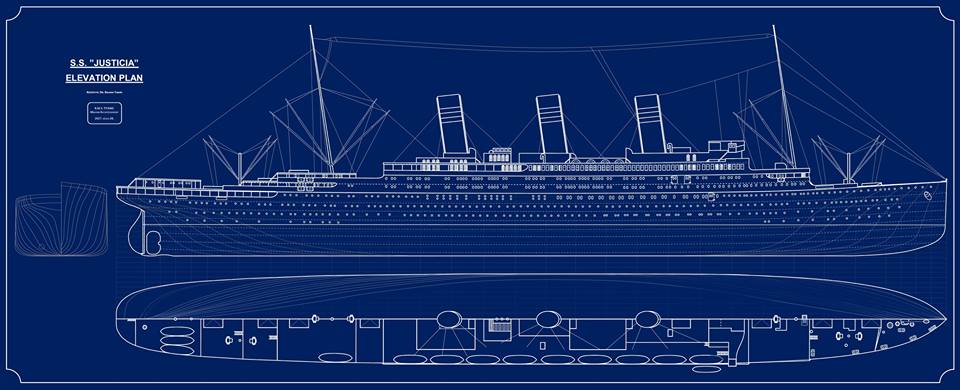
Figure 1: Elevation plans, top view and lines plan of the ship (Source: Dr. Tamás Balogh).
21.03.1912: Joseph Bruce Ismay, CEO of International Mercantile Marine, invites Johann Georg Reuchlin among the leaders of the member companies of the group, to the inaugural voyage of White Star Line's newest ocean liner, TITANIC.
15.04.1912: The sinking of the TITANIC, and the death of Johann Georg Reuchlin. The ship is so similar to TITANIC that the artist William Henry Pearson uses STATENDAM as a model to demonstrate the sinking ocean liner, as it could be clearly identified from the forward end of the ship’s superstructure depicted in the painting.
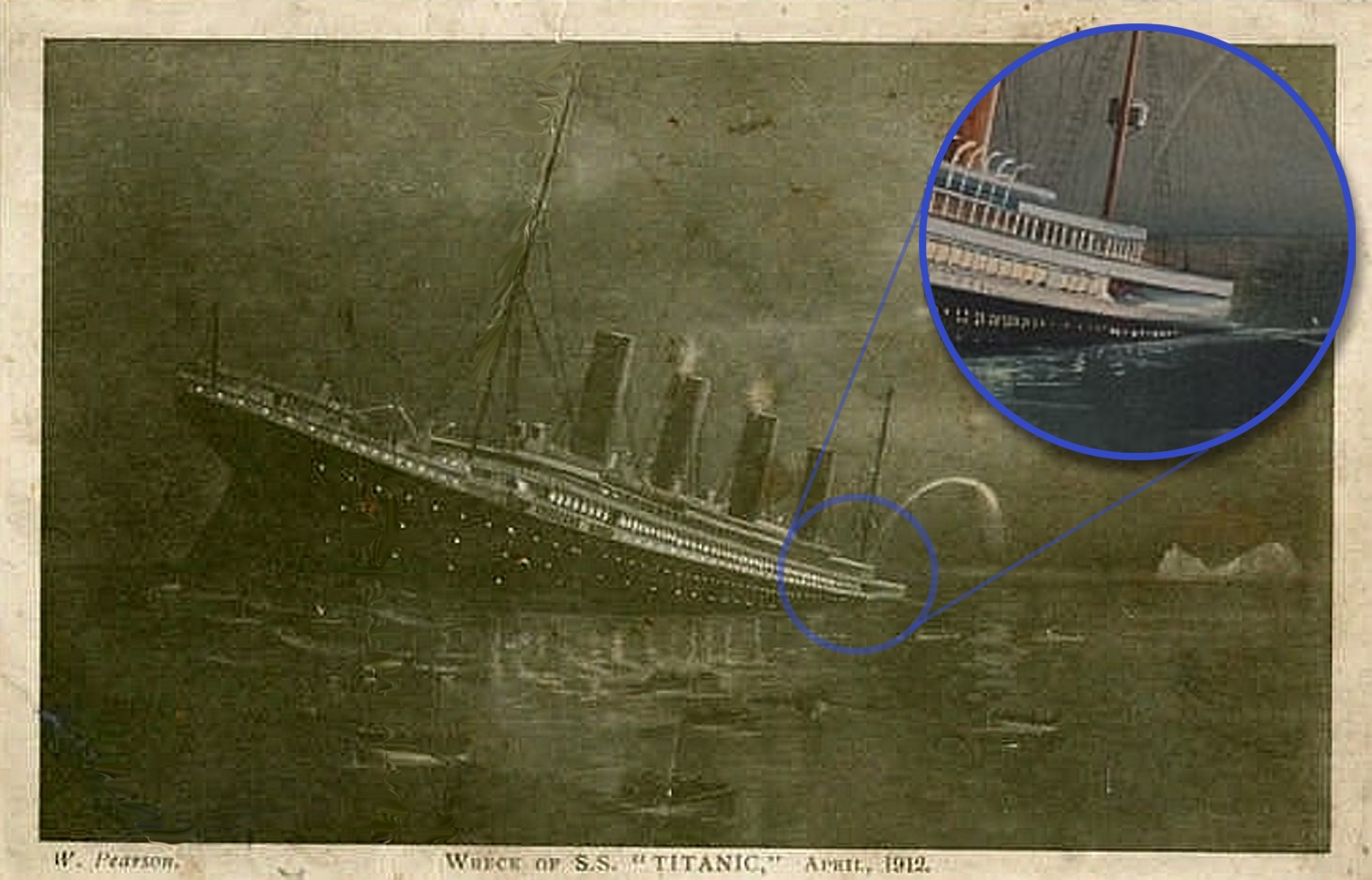
Figure 2.: Black and white reproduction of the Pearson's painting and it's characteristic detail which is based on the general arrangement of the STATENDAM rather than TITANIC (Source: Royal Museums of Greenwich).
31.05.1912: Complete redesign of the ship security system, including raising of bulkheads.

Figure 3.: The ship’s redrawn watertight bulkheads. Modifications made as a result of the inquiry on TITANIC's sinking can be clearly seen with red ink on the drawing (Source: Lloyd's Register Foundation Heritage and Education Center).
11.07.1912: Laying of the ship's keel (yard no. 436.).
09.07.1914: Launch of the ship.
28.07.1914: The outbreak of the First World War.
04.08.1914: Great Britain enters World War I.
01.10.1914: The British Admiralty interested in the high-capacity and fast but semi-finished ship and offers £ 1,000,000 for the hull to Holland-America Line. However, the company wants to keep the ship, so it offers to rent it out for a more moderate fee if the Admiralty give it back after the war, or will provide a similar one if the ship gets lost in enemy action. No agreement will be reached, but negotiations will continue.
02.03.1915 -04.12.1915. a part of the furnishing decorating the ship’s bright interiors was presented at the Panama-Pacific Exposition in San Francisco. The exhibition was basically meant to celebrate the opening of the Panama Canal, which was handed over in August 1914, but in fact San Francisco wanted to demonstrate it' own recovery from the effects of the devastating earthquake of 1906.
Further information:
http://digitized.library.fresnostate.edu/cdm/ref/collection/worldsfair/id/15114.01.09.1915: Negotiations on the ship's future are concluded. The British Admiralty accepts the Dutch conditions.
08.12.1915: Contract signed and the ship handed over to the British Royal Navy. The International Merchant Marine Co. receives a 10% brokerage commission.
07.04.1917: The day after the United States enters the war, the vessel is completed and put into service as a war transport ship. Originally she was offered to the government-subsidized Cunard Line as a replacement of the LUSITANIA sunk by a German U-boot in 1915, so the ship's name was changed from STATENDAM to JUSTICIA (names of all Cunard ships ended with “ia”) as the war propaganda suggests the ‘truth’ restored by this. But Cunard could not display enough hands, sailors, mechanics, and officers (under the conditions established by the Admiralty, all crew had to be provided by the operator). As the Government insisted on bringing the ship into service as soon as possible, they did not wait for Cunard to find a solution, but also offered the ship to the White Star Line, which accept the offer and redirected the surviving crew of the sunken Britannic lost in 1916 (all of them were happy to continue their employment). The ship, with its crew recruited in Piraeus, went to the island of Lemnos, Greece, from where she returned to Britain with British soldiers evacuated from the Gallipoli campaign. The ship's commander was Alexander Elvin Sherwin Hambelton. Further information: https://www.encyclopedia-titanica.org/community/threads/news-from-1922-1929-retirement-and-death-of-capt-hambelton.25501/; https://ancestors.familysearch.org/en/GQC6-FCQ/alexander-es-hambelton-1863-1929).

Figure 4.: Alexander Elvin Sherwin Hambelton (1863-1929), commander of the JUSTICIA (Source: Wikimedia Commons).
25.04.1917: JUSTICIA arrives in New York on her first Atlantic crossing together with ADRIATIC, another ocean liner of the White Star Line. From then on, she commuted regularly between Liverpool and Halifax, Canada, and New York, USA. She carries an average of 5,000 soldiers and 15,000 tons of equipment on its voyages.
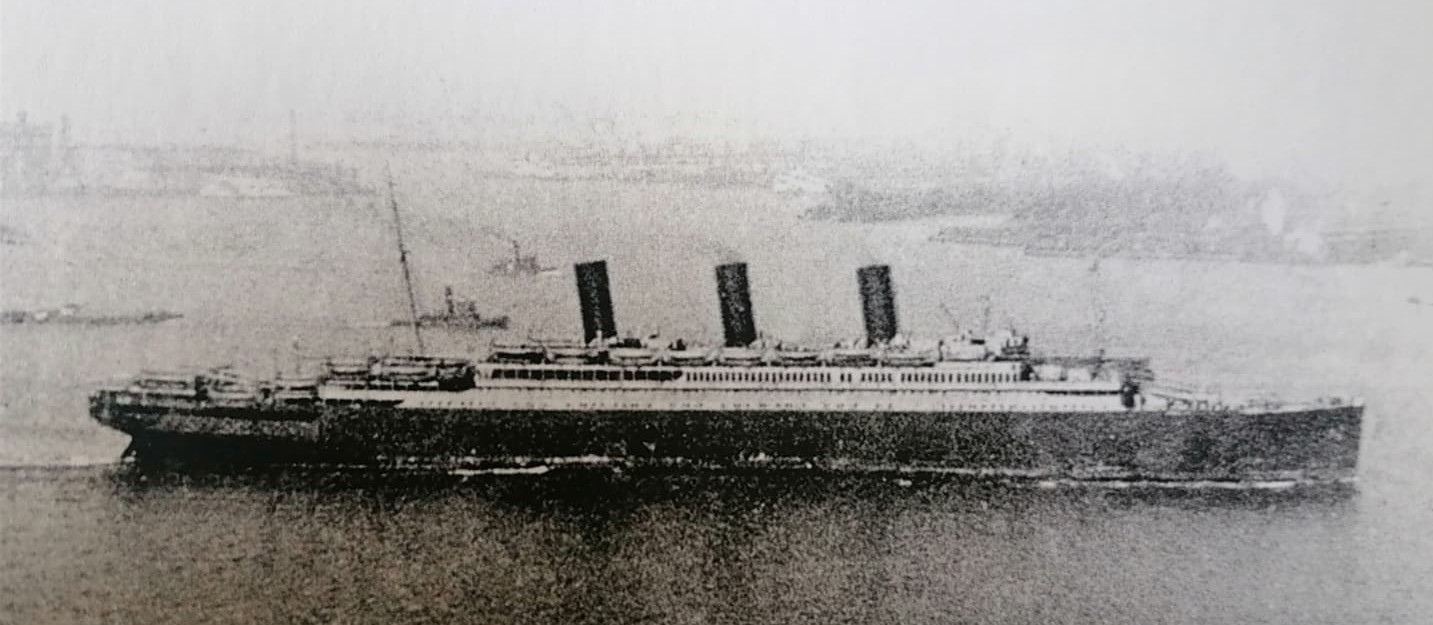
Figure 5.: The ship in New York harbour. To the left in the background are the buildings of Ellis Island. The ship itself bears her original colors except the funnels (Source: courtesy of a Dutch collector, exact reference required).
14.06.1917: The British Admiralty, after a year of preparation and several practical trials, introduces a convoy system for merchant ships in the Atlantic Ocean (and on 22.02.1917. in the Mediterranean). In 1917, 189 convoys bound for Great Britain (with 2,825 ships) and 164 departing from Great Britain (with 2,365 ships), and in 1918, 417-373 convoys (with 6,866-5,126 ships) crossed the Atlantic.
23.10.1917: The ship arrives in Liverpool with a convoy from Halifax. This time, a total of 1,494 people were on board - 1,391 soldiers (1,075 US, 101 Canadian and 213 Serbian reservists) and 105 foreign passengers. The passenger list also included the names of 7 British subject (all women), 6 the wives of officers in the army carried on board (one of whom was the spouse of major-general Sir Charles McGrigor) and 1 the wife of the CEO of the Bank of Montreal.
06.12.1917: The ship departs for Liverpool with a convoy departing from Halifax. On this voyage, she breaks the record for World War I naval shipments: it carries on board 30,000 tons of war supply (the largest quantity ever transported by ship in the war) and 12,000 Chinese workers, recruited to work behind the front. The ship's departure almost coincided with a massive ammunition explosion in the city when the Norwegian cargo ship, IMO (ex-RUNIC of the White Star Line) collided with the freighter MONT BLANC, which loaded with 2,300 tonnes of picric acid, 200 tonnes of TNT, 35 tonnes of high-octane petrol and 10 tonnes of gunpowder. The MONT BLANC caught fire 10 minutes after the collision and exploded 25 minutes later. Within a 2 square-kilometer area of the ship, all buildings were destroyed, 1,950 people died and more than 9,000 were injured. The 3-kiloton explosion - the largest man-made non-nuclear explosion - caused a tsunami in the port, a pressure wave felled the trees and columns, destroyed buildings and damaged ships. Pieces of the MONT BLANC were scattered over a radius of 6 km (later one of the ship’s several-ton anchors was found 4 km, and the remains of a 90-mm cannon 6 km away). For two days, it was rumored that JUSTICIA was also among the damaged ships (in fact, due to the enormous power of the explosion, many thought 30,000 tons of munitions carried aboard JUSTICIA had exploded), until it was discovered that she left port a few hours before the MONT BLANC collided…
... 01.1918.: The ship's hull, which was uniform gray until that, was provided with a geometric dazzle-camouflage, tested in October of the previous year.

Figure 6.: The ship with dazzle camouflage (Source: Naval History and Heritage Command, NH 101616).
24.01.1918: The ship arrives in Liverpool by the convoy from New York, via Halifax. A day earlier, the first - then unsuccessful - torpedo attack against the ship had taken place in the St. George Canal.
19.04.1918: The ship arrives in Liverpool with a convoy departing from New York.
31.05.1918: The ship arrives in Liverpool with a convoy departing from New York.
27.06.1918: JUSTICIA sailed from New York to Liverpool with 5,000 soldiers on board. This was the last time when the ship had visited New York and Captain Hambelton had also disembarked in Europe. This crossing of the ship was also commemorated in the history of the 301th Engineers carried on board (pages 52-58 of the volume). The ship's command was taken over by Hugh F. David.
19.07.1918: At 1:10 a.m., JUSTICIA depart from Liverpool to New York again (barely four months before the armistice). The OLX 39 fast convoy consists of JUSTICIA and six other merchant vessels, including the MELITA, MATEGAMA and LAPLAND ocean liners, as well as six destroyers.
At 2:30 p.m., under the command of Lieutenant General Otto Schrader, the U64 coastal submarine fired two torpedoes at the ship, just 23 miles (42.6 km) from Skerryvore Rock. Schrader confused by the similar silhouette of the USS LEVIATHAN (ex-VATERLAND), an American ocean liner seized from the Germans (which was a high-capacity troop transporter for the war, and every German submarine wanted to sink it). One of the torpedoes missed the target, but the other exploded in the JUSTICIA's engine room, on the port side. The engine room soon filled with water and the ship became immobile, although her condition was stabilized by the damage-control crew. Commander David was prepared to tow by a Navy tug called SONIA to an emergency naval repair base in Buncrana, a 16-hour navigation away.
At 16:30, however, during the preparation for the towing operation, Schrader fired two more torpedoes. One of them was missed the target and the other was destroyed by JUSTICIA's onboard guns.
At 20:00, the U64 will launch another torpedo, which neutralized again by gunners of the JUSTICIA.
At 21:00, JUSTICIA crew will be evacuated 20 minutes before sunset (as the chances of a successful rescue during a night torpedo attack are much lower), leaving only 16 volunteer crew on the damaged ship for the most necessary tasks at the time of towing. Using the radio, other German submarines in the nearby were alarmed by the commandant of U64, which was damaged by destroyers that escorted JUSTICIA. His call was answered by submarines U54 (Hellmuth von Rückteschell) and U124 (Hans Oscar Wutsdorff).
20.07.1918: At 4:30 a.m., the damaged ship were just 28 miles (45 km) from the shore (this means more than half of the distance to Buncrana was done, together with the distance completed during the 11-hour struggle of the previous day) only a 6-hour navigation away. The U124 fires a torpedo at the ship, which, however, misses the target.
Around 6 a.m., further British reinforcements arrive: 12 destroyers and 14 other patrol ships are already securing the wounded giant.
At 9:15 a.m., the U124 launches two more torpedoes (the seventh and eighth torpedoes fired at the ship): the first blasted into the empty cargo hold No. 3 in front of the boiler rooms, while the second into the empty cargo hold No. 5., under the main mast. Along with the results of Friday's attacks, 4 of the ship's 11 watertight compartments were irreparably flooded.
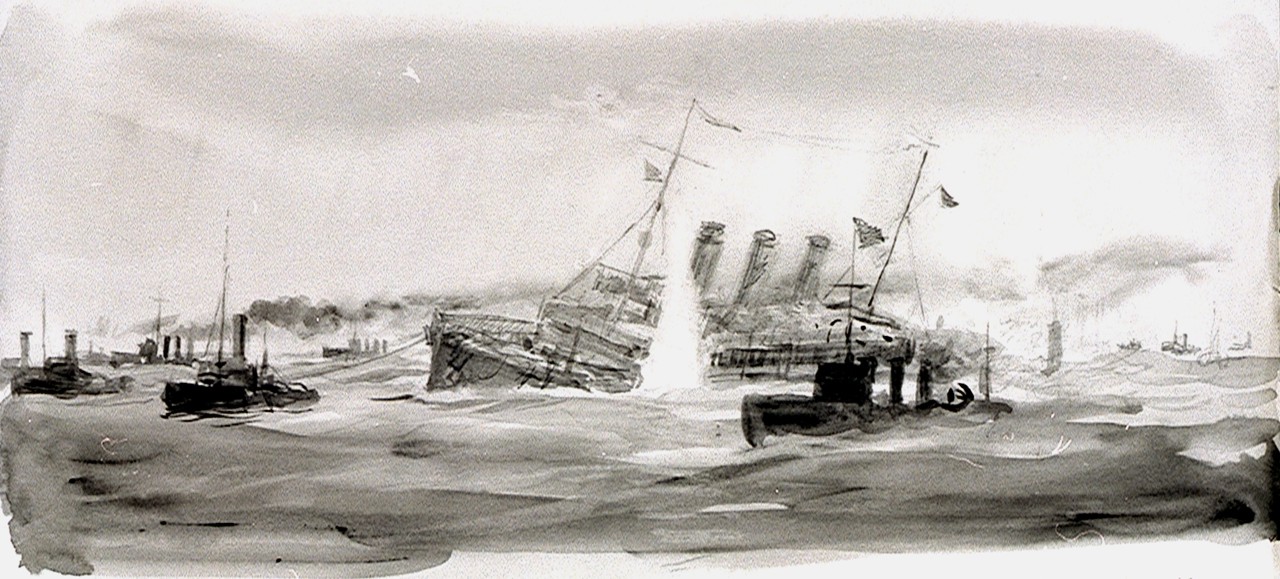
Figure 7.: Artistic representation of the 24-hour struggle of the JUSTICIA by William Lionel Wyllie (Source: Wikimedia Commons).
At 10:30 the 16-man crew leaves the ship, which SONIA is still towing at a speed of about 6 knots, ready to let go if things get worse.
At 11:32 a.m., the newly arrived U54 submarine launches two torpedoes in the direction of JUSTICIA. Both torpedoes explode before reaching the target, without the submarine crew becoming aware of it (they only hear the detonation, but have no visual connection), so they think their torpedoes hit the ship.
At 12:30 the ship, sinking deeper into the water, and barely ten minutes later the whole ship plunged. Position is 55 ° 38 'N, 07 ° 39' W.
At 19:00, the U124 sunk by JUSTICIA’s escorting destroyers, HMS Milbrooke and HMS Pigeon.
There were 10 victims of the sinking of JUSTICIA. The explosion of the first torpedo immediately killed 9 people and injured the death of a third engineer officer, James Thomas, who died of his injuries the next morning. Among the dead were Christopher Foran storekeeper, Percy Grant fireman, James O’Neil, Thomas Russel and John W. Sutton greaser, Maurice Johnston, Samuel J. Turner, David Watt and William J. Jones trimmer. The loss of life of the U124 crew is deck engineer Karl Engstfeld and Lieutenant Paul Seevers.
The loss of the JUSTICIA - as the second largest merchant ship which lost in the war after the BRITANNIC (1916) and before the LUSITANIA (1915) - was reported in the press on both sides of the ocean, highlighting that (for the first time during the war) a whole pack of submarines attack on the target ship.
The case was followed by an official investigation that felt the weaknesses of the warship escorts of the transatlantic convoys.
The unequal struggle between the liner and a submarines had an artistic representation as well made by the famous English naval painter of the age, William Lionel Wyllie.
29.01.1919: The British government provides the Dutch with 60,000 tons of steel for reconstruction of the ocean liner, in accordance with the agreement of 08.12.1915, signed for the charter of the vessel. Holland-America Line orders the new ocean liner from Harland & Wolff Shipyard. As the United States drastically reduced immigration opportunities between 1922 and 1924, transoceanic passenger traffic also changed, and consequently the STATENDAM III. became slightly smaller than its predecessor. Although based on her builder's model it can be seen that the ship is still clearly in close connection with STATENDAM II. as definite continuator of her aesthetic, despite of minor changes in design (e.g. cruiser stern). (Construction of the ship was paused between 1924 and 1927 due to a series of strikes, and was finally towed to the Netherlands in an unfinished state, where its fitting out was completed by 1929. The most popular Dutch ocean liner of the interwar period was destroyed on 11.05.1940, in German attacks on Rotterdam. Today, her memory is preserved only by the numerous contemporary photographs of her).
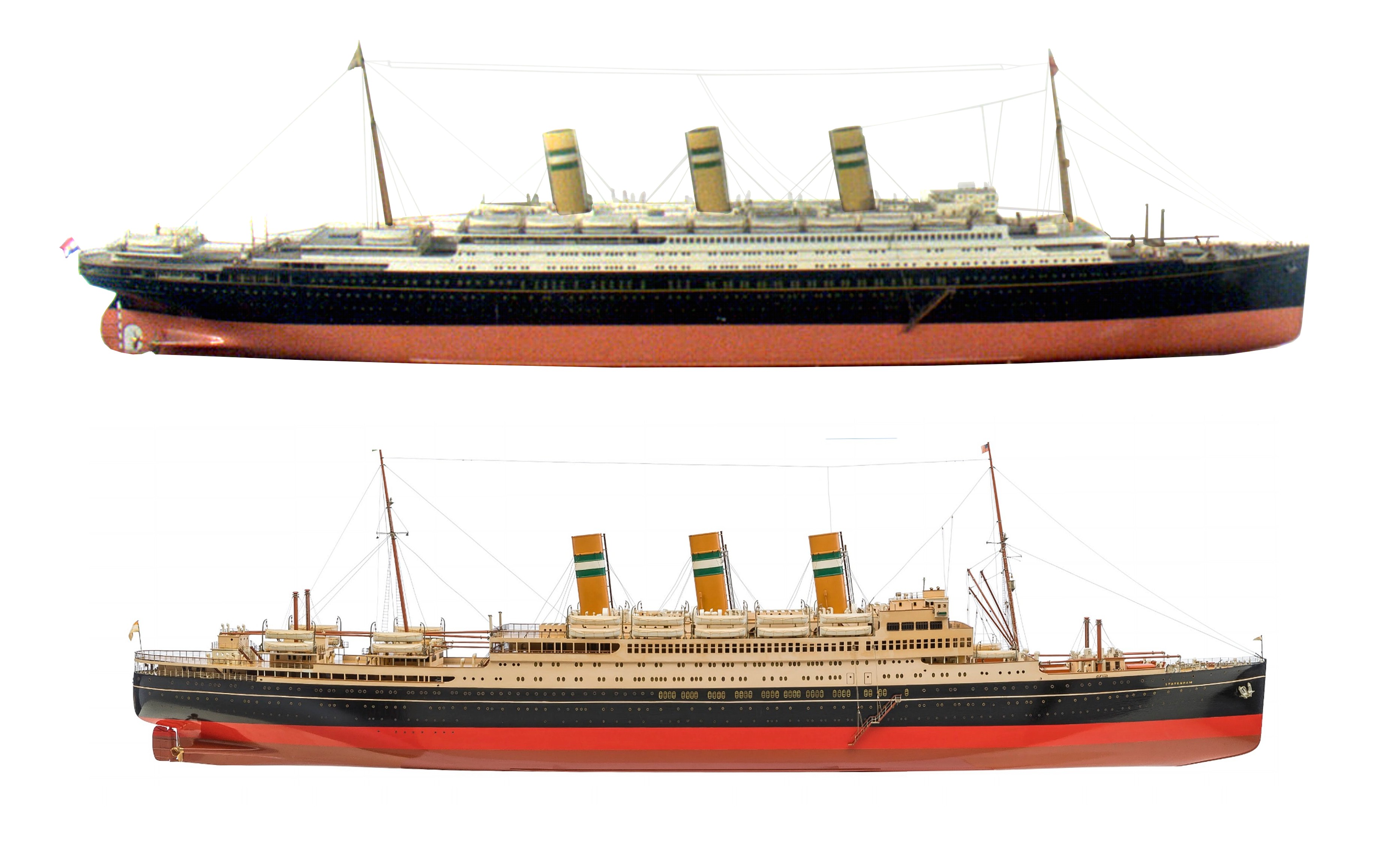
Figure 8.: Builder's models of the STATENDAM II (above) and III (below) from the Harland & Wolff Shipyard (Source: Het Maritiem Museum, Rotterdam)
1993: Divers Norman and Simon Bamford find and identify the wreck of JUSTICIA while performs the first diving to her wrecks.
1995: Leight Bishop, a well-known underwater photographer and wreck diver, takes impressive underwater photos of the wreckage, which attract hundreds of divers and make a significant contribution to making the wreck known.
2005: The first SONAR image of the wreck is completed as part of the Irish National Seabed Survey.
2014: Diver Norman Woods is the first to make an underwater film footage showing larger areas of a wrecksite by attaching his GoPro camera to his scooter, so he was able to swim back and forth along the longitudinal axis of the huge ship in 13 minutes.
2018: Tamás Balogh prepares the first monographic elaboration of the history and wreck of JUSTICIA, which was presented to the public exactly on the centenary of the ship's sinking at the ship's birthplace, Harland and Wolff Shipyard in Belfast as a symbolic returning to home of her. A centenary diving expedition commemorates the sinking of the ship, led by diver and underwater photographer Darragh Norton.
2019: Diver Barry McGill identifies the wreckage of the U124. The first documentary about the history and wreck of JUSTICIA has been made, directed by Matt Bone, with the help of experts from Barry McGill and Tamás Balogh.
2020: Gerard Dooly, a researcher at the University of Limerick in Ireland and a fellow at the University's Mobile and Marine Robotics Research Center, initiated the latest generation of tools (underwater scanners and augmented reality) to support the research of the shipwreck.
2021: Based on the plans of Tamas Balogh, Bennett Gyurik created the first virtual reconstruction of the ship, which was inserted into a 20-second animation by the staff of the KGB Studio.
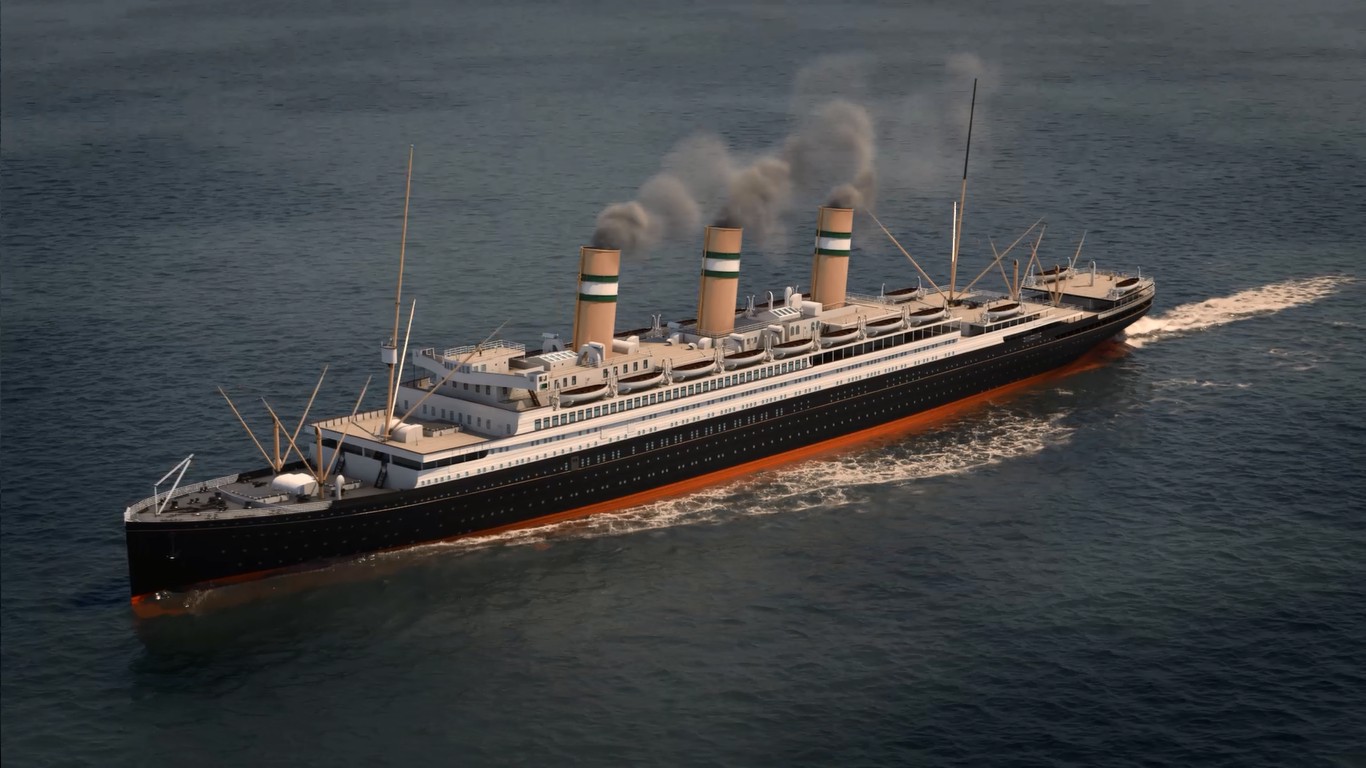
Figure 9.: Modern 3D visualization of the ship (Source: courtesy of Dr. Tamás Balogh).
It would be great if you like the article and pictures shared. If you are interested in the works of the author, you can find more information about the author and his work on the Encyclopedia of Ocean Liners Fb-page.
If you would like to share the pictures, please do so by always mentioning the artist's name in a credit in your posts. Thank You!
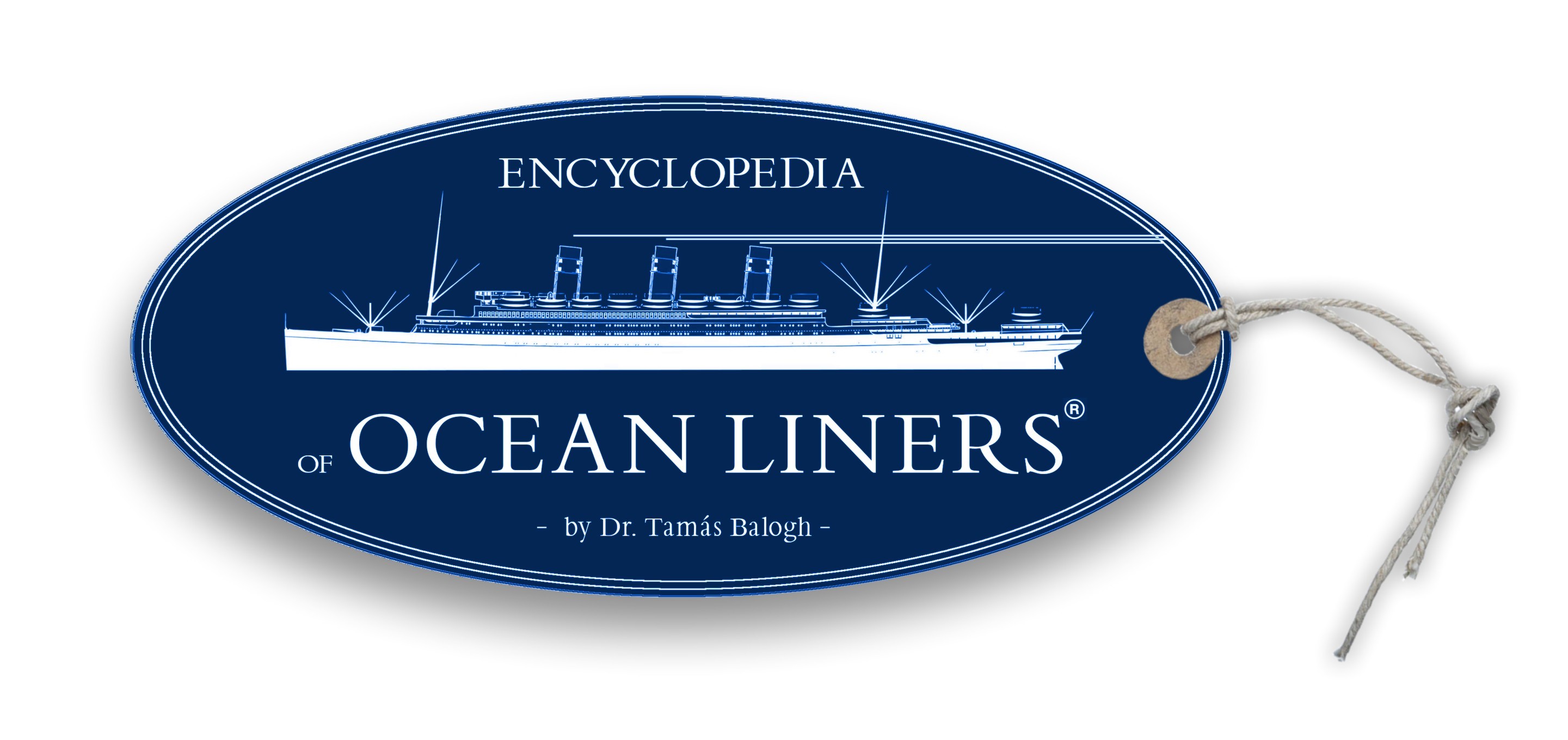
-
Shipwreck Scanning - Development of Underwater Archeology Visualization Toolkit Today
On May 1, 2021, Gerard Dooly, a researcher at the University of Limerick in Ireland and a fellow at the University's Mobile and Marine Robotics Research Center, initiated a live broadcast in order to present those underwater survey/visualization infrastructure, which is currently in use for the exploration of the remains of H.M.T. JUSTICIA and H.M.S. AUDACIOUS (largest World War I shipwrecks off the north coast of Ireland) on the North Atlantic. In that broadcast participated a technical diver, diving instructor and wreck photographer, Barry McGill, owner of Indepth Technical Diving, and Tamás Balogh, the president of our association.

Figure 1: Participants in the conversation, Tamás Balogh (left) and Barry McGill (right), while analyzing footage taken during a dive at the wrecksite of JUSTICIA (ex-STATENDAM). The full conversation can be downloaded here.
In 2005, the Geological Survey Ireland and the Marine Institute set up the Integrated Mapping Program for the Sustainable Development of Ireland's Marine Resources (INFOMAR) as a follow-up to the Irish National Seabed Survey (INSS) focusing on the development of products for the integrated imaging of the physical, chemical and biological characteristics of the coastal seabed. The total map coverage of the INSS by the end of 2005 was 432,000 km2, which is 81% of the seabed area of Irish territorial waters. INFOMAR is the largest seabed survey program currently underway in the world. Not only in terms of its geographical scope, but also in terms of its dynamizing impact on a wide range of science, the economy and society. The program helps to understand the seabed's fauna, ecosystem, economic treasures, structural morphology, as well as the development of mapping and visualization applications and robotics (unmanned underwater vehicles), as well as the relationship between research and business in the field of newly developed solutions for production. and industrial application). One important partner in the implementation of the INFOMAR program is the University of Limerick, whose Mobile and Marine Robotics Research Center (MMRRC) is developing the infrastructure for the mapping program.
One of the important beneficial side effects of a large-scale integrated marine resource assessment program is the collection of position and depth data essential for shipwreck mapping and the production of three-dimensional seabed and wreck maps produced with high-efficiency sonar equipment. As a result, we now know exact datas of 270 shipwrecks out of some 15,000, in the waters around Ireland, mostly from the First and Second World Wars. Of these, 90 are located in the vicinity of the Malin Head, and 46 of them are also known by name. One of these 46 shipwrecks is the H.M.T. JUSTICIA (ex-s.s. STATENDAM) ocean liner and H.M.S. AUDACIOUS dreadnought-type battleship, the remains of which lie near the northernmost point of the island of Ireland, the Malin Head, at a depth of 68 m.
Barry McGill has long been a regular participant in the research of historic shipwrecks near the Malin Head, and together with Tamás Balogh they participated in a 2019 expedition researching the wreck of H.M.T. JUSTICIA. The two researchers commented on the images transmitted from the site during check-in by a research team led by Ger Dooly, while the expedition is currently examined the wreck of the H.M.S. AUDACIOUS (H.M.T. JUSTICIA was examined on the previous day).
H.M.S. AUDACIOUS was one of the newest (1912 built) dreadnought type British battleships (like the Austro-Hungarian SZENT ISTVÁN). On the morning of 27 October 1914, barely three months after the outbreak of World War I, she ran onto a sea mine, layed by the german minelaying ship S.S. BERLIN (converted passenger liner) off the north coast of Ireland . The sea-mine exploded on the left side of the battleship, under one of the engine rooms (unfortunately, just 3 feet in front of the engine room’s rear watertight bulkhead), so only the center and right engine rooms continued to function. The ship tilt increased until 15 degrees (which was decreased to 9 degrees by counter-flooding) continued her way at reduced speed and ask for towing. Then, with the exception of the battleships, all vessels in the vicinity were ordered to rescue (due to the importance of AUDACIOUS, not caring that rescue-ships could also hit mines). The huge R.M.S., OLYMPIC, TITANIC’s sister ship was also nearby, on her way, full of passengers, also hurried to the scene, and since the battleship was still deemed rescuable, sent a tow rope over, trying to tow the H.M.S. AUDACIOUS to the nearest port. However the damaged battleship gradually became more and more flooded by the heavily waveing sea, and - when she eventually became unnavigable - her commander gave the order to abandon her. Most of the crew is picked up by the OLYMPIC. The H.M.S. AUDACIOUS was finally sunk at night, 12 hours after the mine exploded. The only victim of the incident was a petty officer of the cruiser H.M.S. LIVERPOOL, who was hit by a metal piece when the H.M.S. AUDACIOUS capsised and exploded shortly before its final plunge (as the shells - stored in the magazine of the forward gun turret - detonated and the cordite ignited by this).
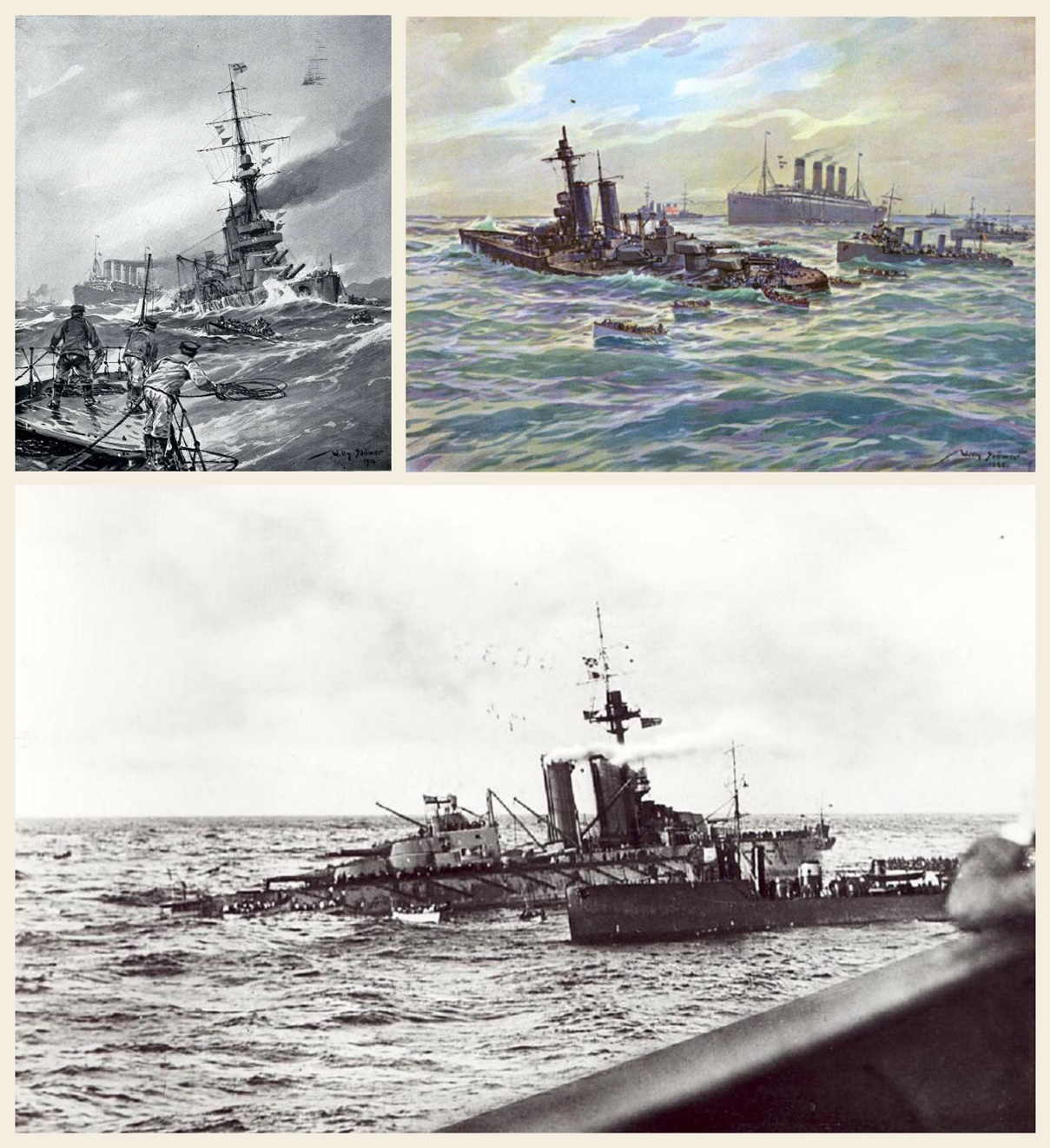
Figure 2: Contemporary painting of the H.M.S. AUDACIOUS and R.M.S. OLYMPIC made by famous German naval painter Willy Stöwer and a photograph taken by an American passenger aboard the ocean liner (in the foreground of the latter picture is the bulwark of the boatdeck, while lifeboats of the OLYMPIC can be seen at the stern of the damaged battleship).
The bow broken off due to the ammunition explosion is further away from the rest of the hull. Between the two parts of the hull lies the forward gun turret, which has fallen out of its original position, and the armored barbetta separated from it. The capsized hull is in the final stage of collapse, as the unarmoured parts of the hull gradually falls between the armored - and therefore extremely solid - side walls of the hull (the same process is just going on for similar reasons in case of the sunken Austro-Hungarian battleship SZENT ISTVÁN which is only 2 years younger than H.M.S. AUDACIOUS). Therefore, the accurate recording of the wreck and of the correlation between the parts of it, is a particularly important task, as with the final collapse, a significant part of the ship's explorable past will also be lost. With technology developed by Ger Dooly and his team, the capsized and disintegrated wreck was therefore virtually scanned. As it is a ship 182 m long and 27 m wide, this is no small task. Nevertheless, a remotely operated vehicle (ROV) wich can keep a constant depth under water and a constant distance from the wreck with the laser beam emitted by the attached detector, traveled through the wrecksite just like a 3D scanner on an object selected for digital fixing. The process thus provides a much more complete picture of the wreck and the wrecksite as a whole than what traditional diving expeditions would be able to do in the same amount of time. This technique therefore provides a more complete and detailed picture of the wreck than ever before, greatly aiding the research of them and reducing the risk of work, as the high-detail picture can be taken without even a single diver having to dive to the seafloor. This procedure is the most advanced and efficient way currently available to visually display wrecks.
The mapping of wrecks, the recording and display of data from on-site surveys has undergone long development. The first open-circuit scuba technology was designed by Jacques Yves Cousteau in 1942, and the first underwater camera was not constructed until 1963 (invented by Jean de Wouters). Until now, archaeologists involved in the work of divers have only been able to record the location and condition of a site and the finds found there, only by making drawings and reconstructive representations used in land archaeological excavations, ie by observation with the naked eye. The first major change was the underwater magnometer developed in 1953, the side-scan sonar published in 1954, and the sub-bottom profiler that has been prevalent since the 1960s. The magnetometer made it possible to separate metal and wood (so it could only be used for already known sites), and the sonar and sub-bottom profiler based on signal reflection drew the topography of the seafloor (making it easier to navigate) and helped identification of subsurface or other structures which burried with sediment. With the further development of the first underwater stereo cameras - developed between 1966-71 - the method of photogrammetry has been applied since 1991, which builds a three-dimensional image from two-dimensional photographs. Thanks to the development of 3D printing, this image itself can even be printed as well. All this helps research and museum pedagogy alike, as the finds become tangible to researchers and those interested.
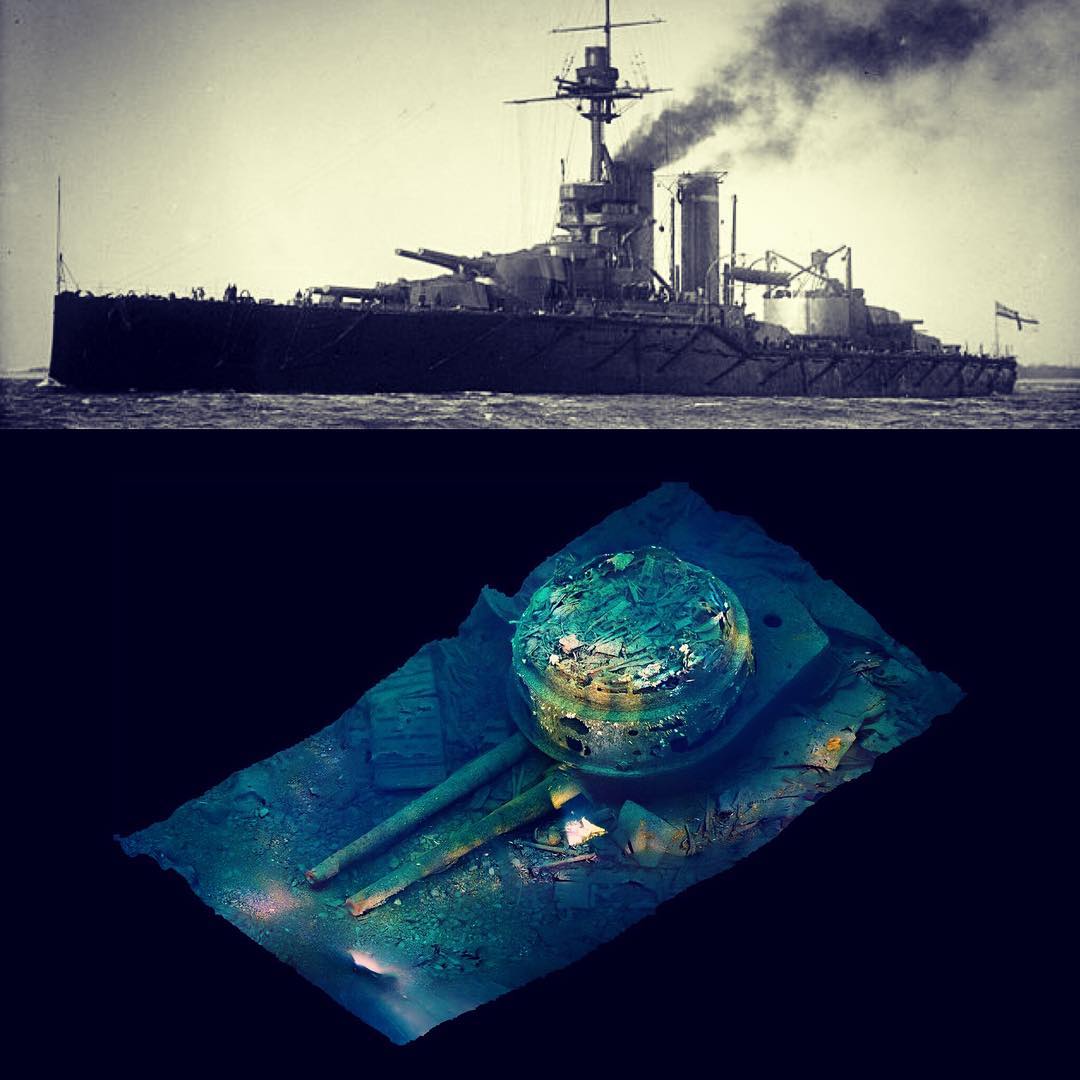
Figure 3: During the exploration of sunken remains of the TITANIC, perhaps the most famous shipwreck in the world, researchers helped in their orientation and analytical work by a huge photographic mosaics composed of many thousands photographs. However, by the advance in technology, these static, two-dimensional images have acquired a rotatable, spatial representation. You can see above the photogrammetric 3D image of the forward gun-turret of H.M.S. AUDACIOUS torn from the overturned hull (Matt Carter, Barry McGill, 2017). The rotatable 3D model is available here.
The latest generation of tools to support shipwreck research is the underwater scanners used by Ger and his team and augmented reality (the current state is complemented by virtual reality), which is capable of spectacularly visualizing changes (especially attracting young interested age groups). The connected geoinformation system - GIS - combines and transforms the data extracted through all these tools and procedures into a database, which (even in the current live broadcast) can be freely forwarded, so it is one of the most effective tool for information sharing, which is one of the most important goal of the archeology in addition to information acquisition (survey and documentation).
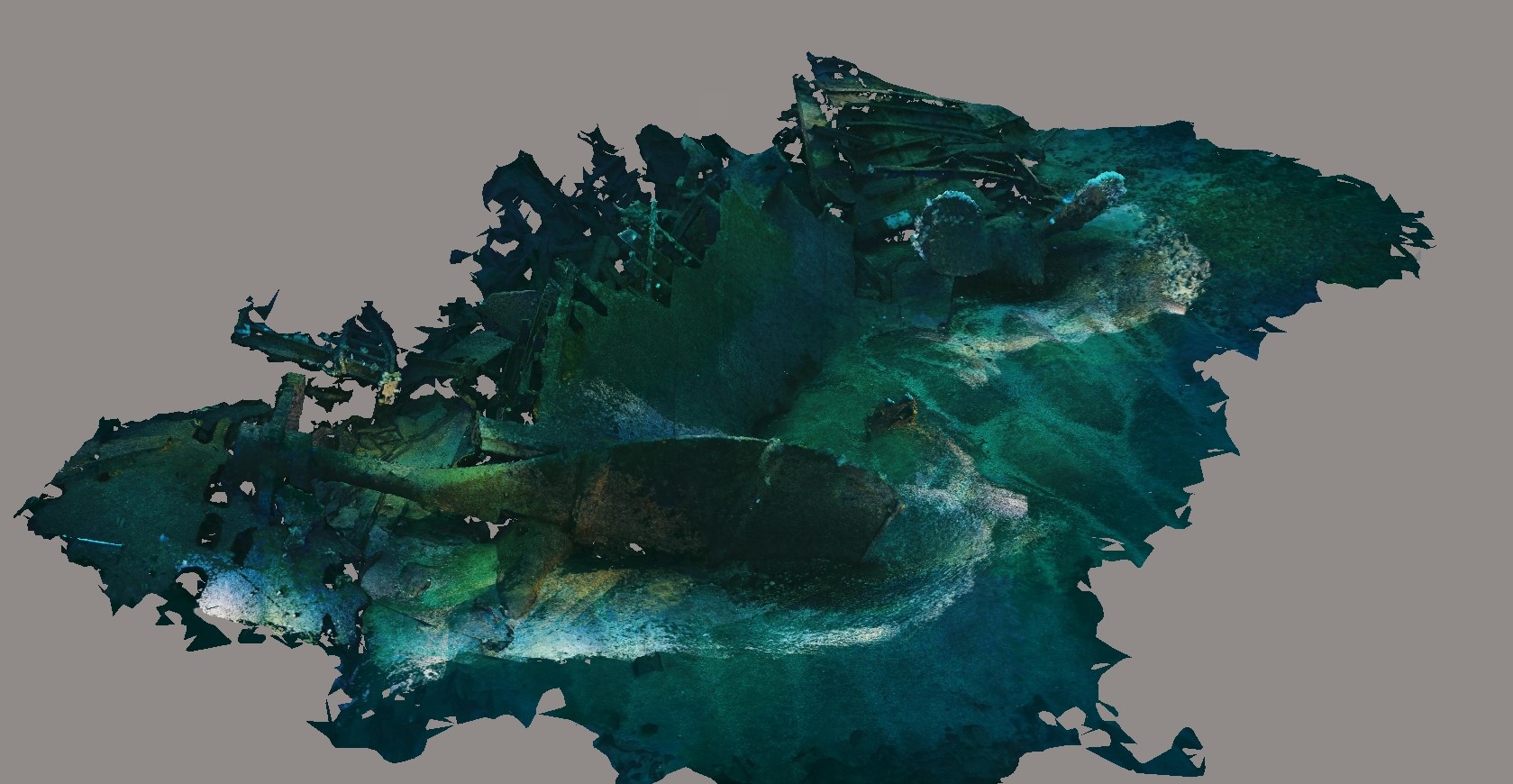
Figure 4: Results of a photogrammetric survey of the stern section of the JUSTICIA's (ex-STATENDAM's) wreck according to the progress made in July 2020. In the foreground of the picture is the rudder blade attached to the left-tilted stern post, and to the right in front of that (closer to the upper edge of the picture) are the two blades of the right propeller which is partially buried by the sediment. (Source University of Limerick, Ger Dooly, Indepth Technical Diving, SANTI diving TEAM, SANTI Diving, Big Blue Dive Lights).

Figure 5: The underwater laser scanner in work, the at the tip of the bow of the JUSTICIA's wreck. Source.
During the conversation that accompanied the spectacular presentation, Barry McGill reported details of a series of research on the wreckage of H.M.S. AUDACIOUS, demonstrating how the strong current that can be felt everywhere in the shallow sea makes it difficult for divers, who can be swept away from their desired position on the one hand, and blinded them on the other hand by the sediment and by the fine-grained rust (which rises in clouds from the wreck during the sudden collapse of a larger structural element), kept in motion by the current, minimizing the visibility. At the same time, Barry did not fail to mention that the wildlife of the continental shelf is also present on the wreckage and sometimes a seal appears among the remains.
Tamás Balogh emphasized the importance of H.M.T. JUSTICIA (ex-STATENDAM), in this context, addressing in particular why the ship is often referred to as the “Dutch TITANIC”. With the scheduled construction of the sister ships OLYMPIC, TITANIC and GIGANTIC, the Harland & Wolff Shipyard in Belfast is prepared to mass-produce the highest quality ocean liners for any nation in the world. Thus, when the Dutch also ordered the type, the shipyard made - on the basis of TITANIC's plans - a slightly smaller vessel (which was the first ship constructed after the TITANIC's launch), optimized for shallower Dutch waters. In addition, the ship was the largest shipwreck sunk by torpedoes in World War I, and the infamous wolf pack tactics of the German submarines of World War II, were created during the sinking of this ship. However, the fierce German attempts to sink the ship at all costs was the result of a misidentification, when Otto von Schrader, the commander of the first German attacker, U-64, confused her with the similar German ocean liner VATERLAND (which remained in the neutral USA at the outbreak of the war, but by 1918, however, she had already transported American soldiers across the ocean against Germany, so the submarines of the German Navy competed with each other to try to sink her as soon as possible).
At the end of the conversation, Ger Dooly emphasized that they wanted to make it possible to apply this spectacularly advanced technology widely, thanks to the partnership of the university. (We note that this technology - with proper foresight and some luck - can even be used in the research of historical shipwrecks important to Hungary, such as the battleship SZENT ISTVÁN, which is a contemporary of H.M.S. AUDACIOUS). The interlocutors then thanked for the spectacular presentation. Barry expressed the hope that the survey, which had begun at the two major sites, could be continued out together as soon as possible and, if possible, that the technology could be used in the exploration of another historic wreck, the LUSITANIA, near to the south coast of Ireland. Tamás Balogh pointed out that a thorough photogrammetric and laser survey covering every detail is probably the most modern technology to implement Dr. Robert Ballard's idea from the 1990s, the virtual deep sea museum.
In any case, with the help of the presented infrastructure, anybody can take a virtual tour at any shipwreck and wreck site, and the image of shipwrecks can be maintained forever. Without having to move anything out of place, or without having to worry about the original material, which - in its previously known form - gradually disappearing during the years. In this way, this technology not only preserve the cultural heritage, but it also makes it much more spectacular than any previous visualization options, making the context easier to understand for those who are less experienced in wreckdiving. Just like the 3D reconstructive animations which shows the original appearance of the ships, of which the latest work represents the H.M.T. JUSTICIA (ex-STATENDAM) which was presented as a farewell to those who are interested in.

Figure 6: Some movie frames from the animation showing STATENDAM (Source: Dr. Tamás Balogh).
It would be great if you like the article and pictures shared. If you are interested in the works of the author, you can find more information about the author and his work on the Encyclopedia of Ocean Liners Fb-page.
If you would like to share the pictures, please do so by always mentioning the artist's name in a credit in your posts. Thank You!
